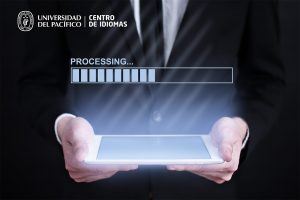
Teachers feeling like a “walking dictionary” in class might be a thing of the past thanks to technology. Now, every time students have any questions about how to use language, they don’t necessarily ask their teachers; instead, they get immediate and arguably more straightforward answers from their phones. Could this then mean technology is going to replace teachers in the end? No! Technology should not be seen as a threat but as an ally that will, on one hand, help teachers to reduce the menial work and, on the other, encourage them to develop a key skill: learnability.
Learnability can be broadly defined as the ability to continue learning. Although this can be misunderstood with the idea of forceful adaptation, what learnability really encourages is the opportunity to explore, relearn, unlearn and innovate. In the past, checking students’ progress meant that the teacher had to prepare extra material to assess students’ performance and also check their marks, the areas for improvement and eventually start suggesting routes to progress. In many traditional educational contexts, this process also involved checking homework in students’ notebooks, which would take hours or even days sitting on a desk. Now, however, the scenario is quite different. Teachers have the chance to use interactive platforms that allow their students to check their progress on their own, in real time. Originally, these platforms had limited customization possibilities, but the new versions in the market give teachers the chance to assign activities more closely related to their students’ real needs. The time spent in preparing material in the past could now be invested in assessing students’ progress. But if teachers want to use these technological tools, they must learn how to use them efficiently and keep updated on their ongoing improvement.
Another interesting tool teachers are beginning to explore and constitutes an attractive change from the usual is online writing proofreaders. At the beginning, these platforms only offered limited feedback. Now, they are much more specific, meaning that online proofreaders can help students with language patterns and other details that are sometimes hard to spot after having corrected 25 pieces of writing. This second example also emphasizes the idea that teachers have to be continuously updated so they can take full advantage of the benefits these platforms offer. Most importantly, the arrival of these tools has placed a new responsibility on teachers, and a space for reflection: what do we focus on when we look at students’ pieces of writing? If we stop at language accuracy and we do not bear in mind other criteria for successful written communication, this technology is here to save us time and somehow force us to focus on them.
It is true technology might be intimidating for teachers if they are not used to it. It could happen as a result of either a fear of being superseded at work or an aversion to change. However, if we change our mindsets and see technology as a welcome aid, then our “learnability index” will rise and we will be right on track to tackle the challenges of the 21st century language classroom.









